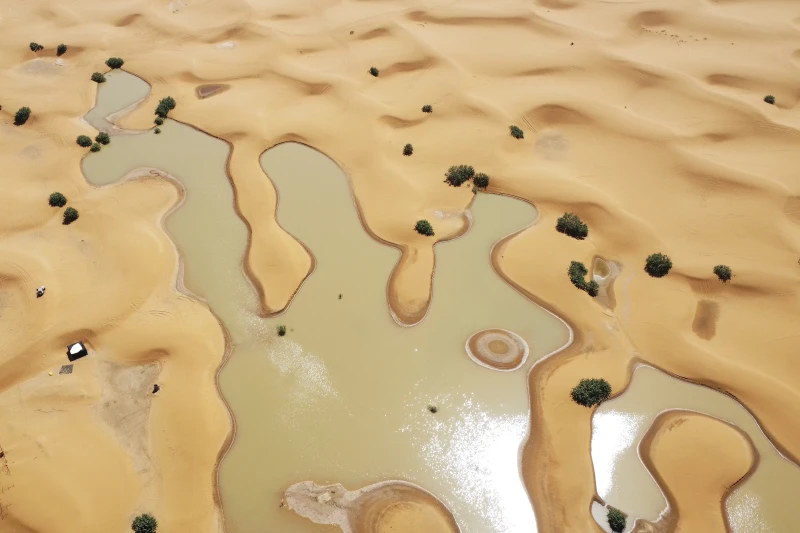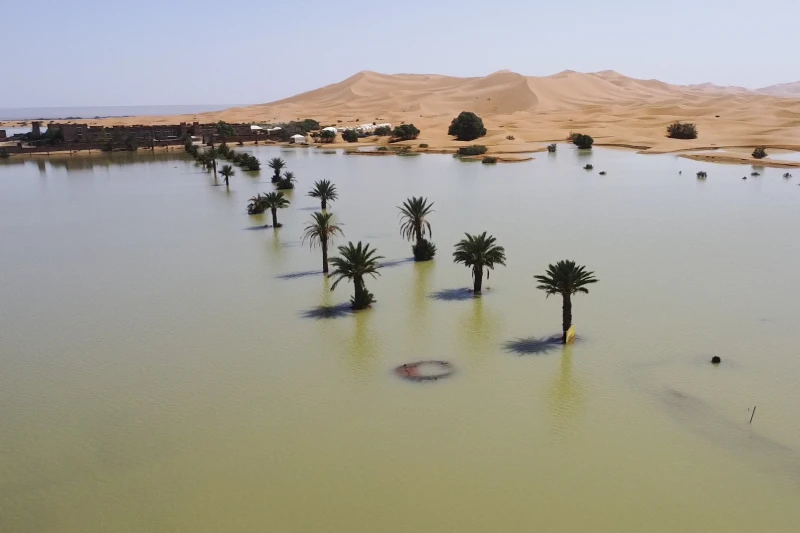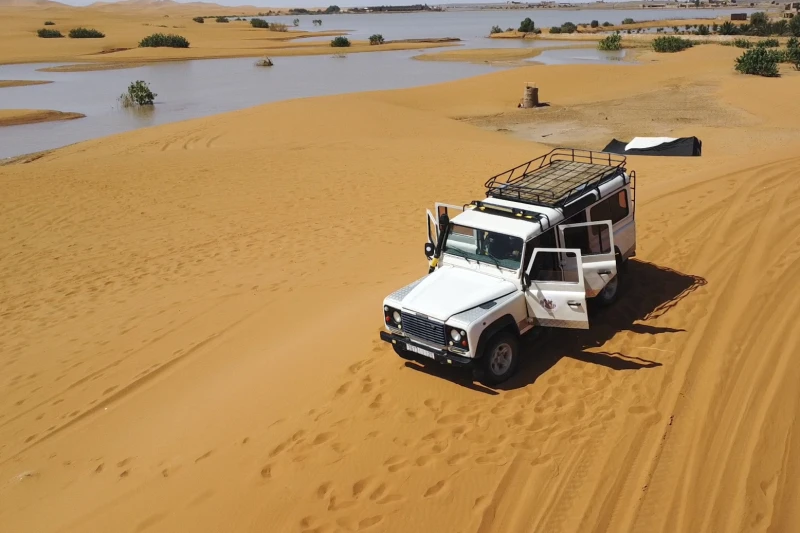In a striking meteorological twist, parts of southeastern Morocco’s Sahara Desert experienced an unusual and significant weather event.
Known for its arid climate, this region rarely encounters rainfall, especially not in the late summer months.

However, a recent deluge turned the desert landscape into a temporary haven of blue lagoons and palm-fringed waters.
According to reports, the rainstorm was so intense in parts of the Sahara that it matched, and in some areas exceeded, the annual average rainfall in just two days.

In the small village of Tagounite, almost four inches of rain fell in one 24-hour period.
This volume of water is remarkable for a place that typically sees less than ten inches annually.

The torrential downpour has provided a much-needed reprieve to a region beset by years of drought.
Experts hope that the rain will help replenish underground water sources, essential for the area’s water supply, although it’s clear that the sustained drought conditions won’t be resolved that quickly.
Remarkably, satellite imagery from NASA captured images of water flowing into Lake Iriqui, a lakebed that has remained dry for the last fifty years.
These visuals have evoked awe and hope among the local desert communities as well as tourists who witnessed the rare transformation.
Meteorologist Houssine Youabeb from the Moroccan General Directorate of Meteorology remarked on the rarity of such storms, noting that this much rain has not been seen in decades.
Youabeb suggests that this weather anomaly may bring about long-term changes in the region’s climate, potentially drawing more moisture and resulting in future storms.
While the spectacle and potential benefits of this rainstorm offer a glimmer of hope, it came with a tragic downside.
The flooding it caused resulted in the deaths of more than twenty individuals in both Morocco and Algeria.
The floods also damaged crops, impacting local farmers’ livelihoods.
As the aftermath of the rain is assessed, questions remain about what caused this unexpected weather phenomenon and what implications it may hold for future climate patterns in the desert.
Nonetheless, the momentary lakes and enriched landscapes provide a vivid, hopeful counter to the relentless drought the Sahara’s residents have faced.
